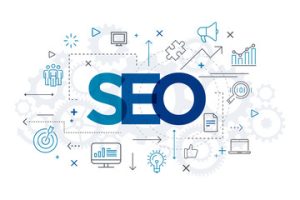Search Engine Optimization (SEO) is a powerful marketing tool that can transform your business. It’s all about aligning your content with the searches and needs of your customers.
With billions of Google searches made each day, SEO is one of the most powerful ways to market your business online. Moreover, it also offers unparalleled reach and a long-term impact on your business. Contact Rank Boss now!

Keywords are one of the most important aspects of SEO. They determine how search engines index and rank pages, and help identify relevant content to meet search queries. They also provide a useful way to understand your audience’s needs and search intent. When used effectively, keywords can increase traffic to your site and attract qualified leads. However, keyword research requires a thorough understanding of the search engine landscape to ensure success.
When it comes to selecting the right keywords, it’s important to select those that are relevant to your niche and the search terms people use. The right keywords will help you target your audience and show that you’re an expert in your field. They’ll also help you compete against your competitors, as long as you don’t oversaturate your content with the same keywords.
Keyword proximity is the closeness of two or more keywords in a piece of content. This can be a factor in how well your content ranks, but it’s important not to overdo it or risk being penalized by Google for keyword stuffing. Instead, try to include related keywords in natural contexts. You can use tools like Google’s “People also ask” section to identify related keywords.
The best keywords are ones that reflect how your audience describes and looks for the products or services you offer. They should be relevant to the audience’s search intent, and should match their language and vocabulary. You can find the best keywords using a variety of tools, including search engines and keyword research software. Some of these tools include Google AdWords, Keyword Explorer, and the Bing Search Toolbox.
Another important aspect of keyword research is to understand what your competitors are doing. This will help you avoid competing with the same keywords and potentially wasting your marketing budget. Using the same keywords as your competition can result in lower rankings and decreased website traffic.
You can also use tools like BuzzSumo to discover popular keywords and topics in your industry. This can help you identify gaps in your content and find new topics to write about.
On-page optimization
On-page optimization is the practice of optimizing individual pages on a website to increase their visibility in search engine results pages (SERPs). It includes identifying and utilizing keywords that are relevant to the page’s topic, writing keyword-rich content, and using relevant meta-tags. It also involves ensuring that the page’s content meets Google’s quality guidelines, such as being accurate, reliable, and readable.
The most important on-page ranking factors include title tags and meta descriptions. These are the first impression that search engines and users have of a web page, so they should be descriptive and relevant to the topic. Title tags should be concise and include a targeted keyword to improve click-through rates on search engine results pages. Meta descriptions summarize the page’s content and can impact user decisions to visit or ignore a webpage.
Another aspect of on-page optimization is internal linking, which helps search engines crawl and index your site. It is also important to ensure that all pages on your site are linked correctly and that no broken links exist. Broken links can affect search engine ranking and negatively impact user experience.
In addition to these on-page SEO tactics, it is also important to optimize the images on your site. For example, add alt text to your images to help search engines understand the context of the image. This can also be beneficial for people who are visually impaired and use screen readers.
While on-page optimization is largely under your control, it is important to remember that it takes time and effort to see results. Ultimately, it is the most effective way to improve your website’s ranking potential. Moreover, it can help you achieve your business goals more effectively.
While on-page SEO isn’t a guaranteed way to rank higher in SERPs, it can have a significant impact on your organic traffic and sales. It can also provide a solid foundation for other digital marketing activities. However, it is important to note that on-page SEO is not a magic bullet, and you should always focus on providing quality content that addresses the search intent of your target audience.
Off-page optimization
Off-page optimization is the process of enhancing your website and content beyond the confines of its own domain. This includes activities like link building, content marketing, and social bookmarking to improve your page’s visibility online. Off-page optimization is a critical part of SEO because search engines use it to determine the quality and relevance of your pages for specific keyword searches. It also helps you meet Google’s quality rating guidelines, including E-E-A-T (Experience, Expertise, Authoritativeness, and Trustworthiness).
Off page SEO techniques include link building, content marketing, and leveraging social media to increase your organic reach. Incorporating these into a comprehensive marketing strategy will help you grow your brand recognition and organic traffic.
To build your off-page authority, you need to earn a high number of links from other websites. However, it’s important to focus on quality over quantity, and make sure that your links come from authoritative sites. A high-quality link is an endorsement of your content, and will boost your SEO ranking.
Public relations (PR) can help you establish thought leadership and build your brand reputation. It can also help you gain media coverage and earn editorially given links, which are a key off-page SEO ranking factor.
Guest blogging is another way to improve your off-page optimization, as it will allow you to promote your content and brand in front of new audiences. You can also participate in roundup posts and other content aggregation services to boost your off-page SEO and visibility.
While off-page optimization can be a time-consuming process, it’s an essential part of any digital marketing strategy. The key is to treat it as a campaign, with clear goals and metrics. It’s also important to identify your target audience and understand their needs, preferences, and behaviors to optimize your off-page optimization efforts.
A “created” link comes from a webmaster or publisher who has added your link to his or her website. This type of link is usually considered to be a spammy practice, and search engines will penalize your site for it. To avoid getting a penalty, it’s important to focus on natural or created links from trusted sources.
Link building
Link building is the process of getting other websites to include links to your website. This helps increase your site’s ranking in search engine results pages (SERPs). It is a key part of any seo strategy. But many SEOs neglect it, focusing instead on content and UX. This is a mistake. Link building is just as important as other factors like on-page optimization. Here are a few tips to help you get started with this crucial marketing tactic.
First, create something worth linking to. This could be a blog post, tool, research study, or graphic. The asset should be valuable to the audience you are targeting, but also useful to people outside that audience. Then, promote it. You’ll be surprised how often your links get clicked when you have a great resource available for your audience.
Another important aspect of a good link-building campaign is to build relationships with other webmasters. This is a time-consuming process, but can be very beneficial in the long run. It’s important to remember that you should always try to be a helpful person, and not just a pest. This will make other people more likely to want to work with you in the future.
Finally, don’t forget about the power of social media and other channels to reach potential customers. This is a powerful way to build links and drive traffic. But you have to be strategic about how you use these channels, or they can hurt your rankings.
Some common techniques for building links include forum posting, community posting, and Q&A sites. However, these methods are relatively easy to replicate and don’t provide much value in the eyes of Google. Instead, consider creating comprehensive content and promoting it within your industry and online communities. For example, if you see a competitor writing about a new tech development but not going into detail about how it works, take the opportunity to do some research and write an in-depth article that fills in the gaps. This will help you establish yourself as a thought leader in your industry and encourage other companies to link to your content.
